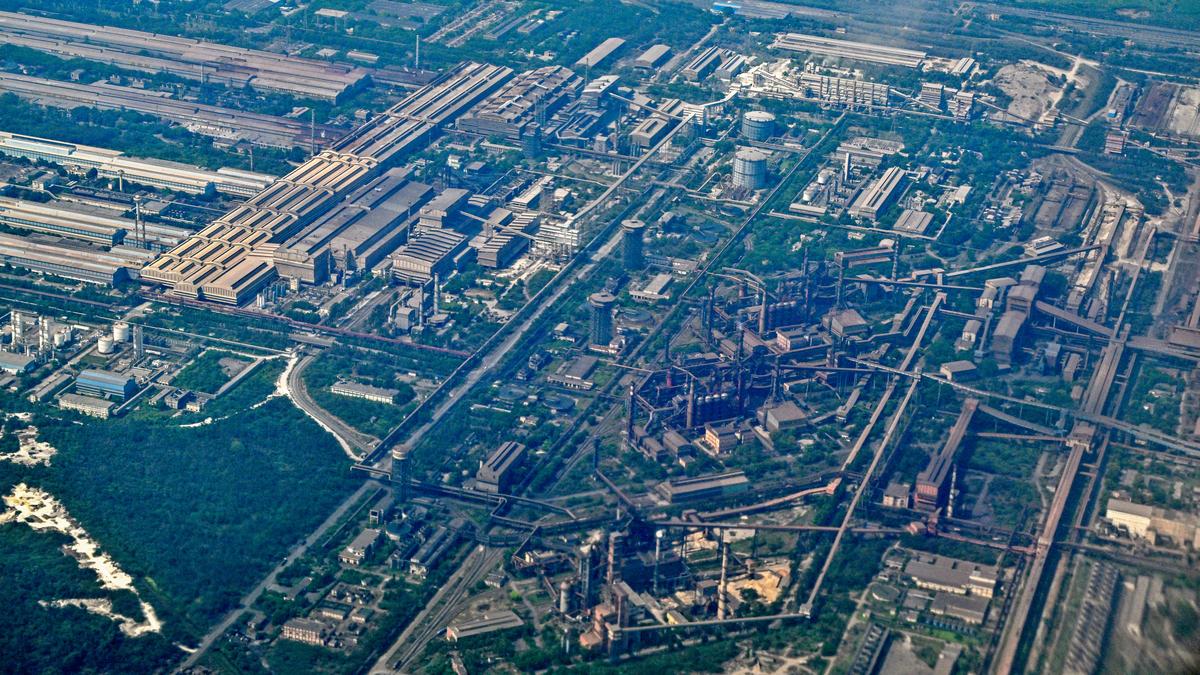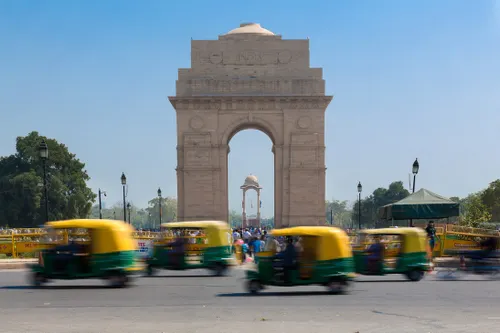If all goes well, the erstwhile, undivided district of Visakhapatnam could soon become the largest steel manufacturing district in the country.
The largest integrated and shore-based steel maker, Rashtriya Ispat Nigam Limited (RINL), the corporate entity of the Visakhapatnam Steel Plant (VSP), a fully-owned public sector unit, is already based in Visakhapatnam city, and, soon, ArcelorMittal Nippon Steel India Private Limited (AM/NS India), a private entity, is poised to set up one of its largest steel plants in Rajayyapeta in Anakapalli district which was earlier a part of the undivided Visakhapatnam district.
While the RINL already has the capacity to produce steel to the tune of 7.3 million tonnes per annum (MTPA), the AM/NS is gearing up to establish its 7.3 MTPA unit in the first phase and scale it up by another 10.5 MTPA in the second phase.
Both plants combined, in their full capacity, will be in a position to produce steel close to 25.10 MPTA, and this would give the undivided district of Visakhapatnam, which has been split into Visakhapatnam, Anakapalli and Alluri Sitharama Raju districts, the distinction of being the largest steel-producing district in the country.
Meanwhile, experts from the steel sector and former senior executives of RINL say that RINL has enough land to scale up its production from 7.3 MTPA to 20 MTPA, which could further increase the output and play a key role in achieving India’s steel production target of 300 MTPA by 2030.
Many hurdles
However, achieving this feat depends on many things. Primarily, it depends on the political will and the efforts the ruling NDA government put in, both at the State and in the Centre.
RINL is in red for multiple reasons, and the Union Government had already proposed for its 100% strategic sale in January 2021. But stiff resistance from the employees and trade unions played a deterrent role and no buyers had come forward.
Finally, the Centre, coming under pressure, announced a bailout package of ₹11,440 crore for RINL in January this year.
However, the bailout package is not sufficient for the debt-strapped RINL, and the alternatives that are being discussed include primarily a merger with Steel Authority of India Limited (SAIL) or leasing out captive iron ore mines to the PSU, which has been eluding it for the last 30 years.
Minister of State for Steel B. Srinivasa Varma ruled out the merger of RINL with SAIL for the time being. The board of SAIL refused the merger idea owing to the debts of the VSP. Merger could be considered only when it would become free of debts and profitable, he said..
However, speaking to The Hindu, former independent director of SAIL Kasi Viswanatha Raju said, “Merger with SAIL is on the cards, and it cannot be ruled out. There are a few technical issues that have to be ironed out. Merger is the only better alternative and a win-win for RINL, SAIL, and the government.”
According to him, apart from debts, the major technical issue is that RINL is a fully-owned PSU while SAIL is a listed company.
Cost-cutting mode
First, the balance sheet of RINL had to improve, so the PSU was already in a cost-cutting mode. It had announced VRS and was in the process of reducing the excess force of contract labour, he said.
“It has even removed the CISF from its security. Earlier, for every constable of CISF, the plant was paying about ₹90,000 per month. Now they are in talks with the State’s SPF (Special Protection Force), wherein the cost of one SPF constable will be ₹30,000 to ₹40,000. A bailout package has been given and Steel Minister Kumaraswamy has promised another big package soon. This should improve the balance sheet of RINL and help SAIL go for the merger,” Mr. Raju explained.
If SAIL took over RINL, the total raw material purchase cost of RINL would come down by ₹5,000 to ₹6,000 per tonne, he added.
Captive mines
Ch. Narasinga Rao, a member of the State secretariat of CPI(M) and one of the chairpersons of the Visakha Ukku Parirakshana Porata Committee (the umbrella body that led the anti-privatisation movement), said that whether SAIL would take over or not, RINL could be revived only if the government leased a few iron mines to the plant.
“If mines can be allotted to AM/NS, a plant which is yet to come up, why can’t they be given to a 30-year-old PSU that has been pitching for mines since its inception? The moment mines are allotted to VSP, its raw material expenditure will come down by at least ₹5,000 per tonne,” he said.
The allotment of captive iron and coal mines has eluded VSP since its inception. M.N. Dastur, the project consultant of VSP, clearly mentioned the allotment of the captive in its project report four decades ago.
The report noted that VSP’s survival and profitability primarily depend on the allotment of captive iron ore and coal mines. However, Adinarayana, of AITUC and one of the chairpersons of VUPPC, said that every successive government has failed to take note of this.
“Despite issues like the merger with SAIL, allotment of mines, clearing of debts with bailout packages and pulling it out of the debt crisis, RINL is the pride of Andhra and it has been restored to full production of 7.3 MTPA,’‘ opine the members of Steel Executive Association (SEA) of RINL.
The steel plant had come up after the sacrifice made by over 30 people, who had died in police firing during the Visakha Ukku – Andhrula Hakku agitation in 1966. A lot of emotions and sentiments of the people of Andhra, especially from the North Coastal regions, are attached to this plant. We do not oppose private plants coming up, but the well-being of RINL should be given prime importance by both the Union and the State Governments, said a member of the SEA.
It is not that RINL or VSP has not earned profits. From 2001 to 2016, it earned profits and went into losses again from 2016, due to a number of factors.
SEA members said heavy interest on loans, at 18.9%, and a lack of captive mines were the main reasons for its losses.
‘’If RINL is fully functional and AM/NS comes up, then nothing can stop Visakhapatnam-Anakapalli from becoming the hub for steel making in India,’‘ is the view being expressed by stakeholders.
‘’Most importantly, both plants can work in parallel without harming each other’s interests and make Andhra Pradesh and the districts proud,’‘ they said.
Different products
According to sources in the VSP and AM/NS, the products of both plants and the markets are also different.
While RINL manufactures long products such as channels, angles, wire rods, rebars and beams, AM/NS reportedly will manufacture flat products such as plates, sheets, HR coils, CR coils and crude steel.
“Both plants can cater to all the products in the steel industry. The region will not only become the steel-making hub of the country, but will also develop the region and the State immensely. The GSDP of Andhra Pradesh will increase phenomenally. When steel plants of such magnitude operate successfully, the entire region develops, as such plants are creators of large-scale employment and ancillary industries,’‘ said a senior executive at RINL.
‘’This will not only be the steel making hub, but if things fall in place for RINL and AM/NS, both the districts will develop and employment, both direct and indirect, could cross over one lakh. AM/NS will be investing around ₹1.47 lakh crore, and the State Government has already allotted 2,200 acres of land,’‘ said Mr. Viswanatha Raju.
Published – May 02, 2025 10:35 pm IST
Anurag Dhole is a seasoned journalist and content writer with a passion for delivering timely, accurate, and engaging stories. With over 8 years of experience in digital media, she covers a wide range of topics—from breaking news and politics to business insights and cultural trends. Jane's writing style blends clarity with depth, aiming to inform and inspire readers in a fast-paced media landscape. When she’s not chasing stories, she’s likely reading investigative features or exploring local cafés for her next writing spot.






